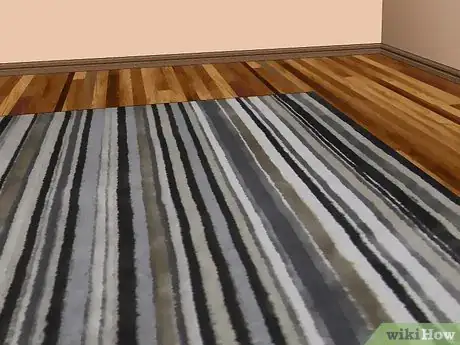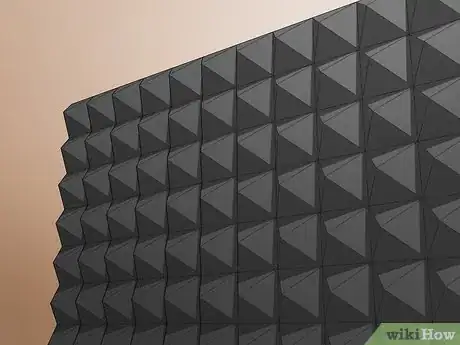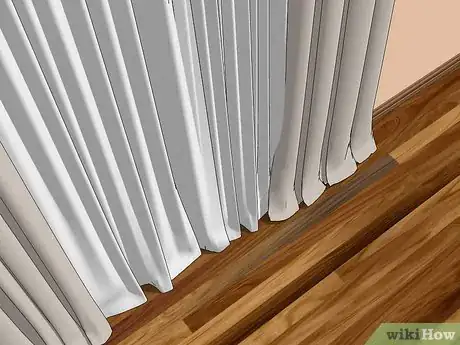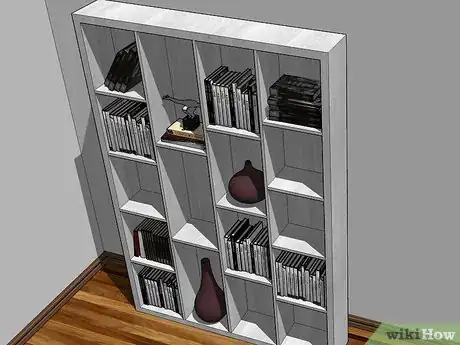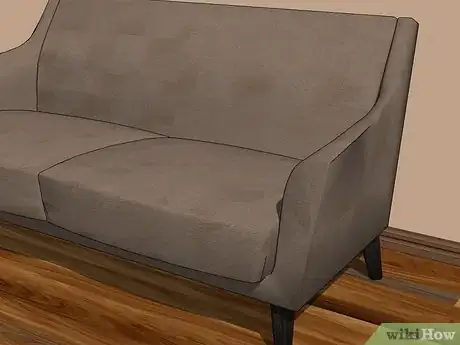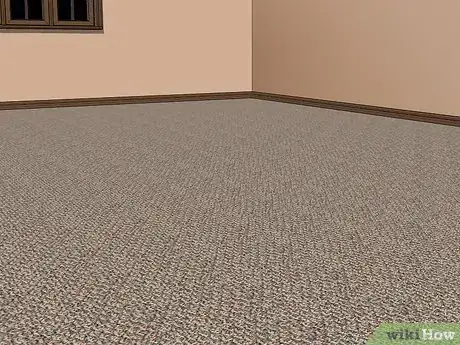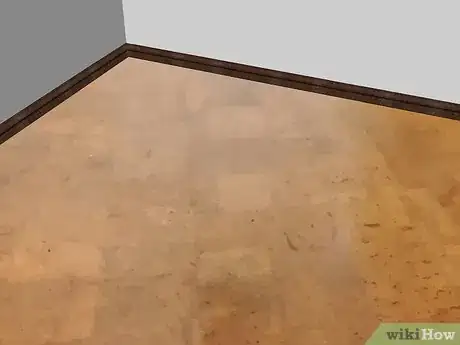This article was co-authored by Andrew Peters. Andrew Peters is an Architecture and Construction Specialist and a Principal at Peters Design-Build, a full service architecture and construction firm in the San Francisco Bay Area. With over 20 years of experience, Andrew specializes in sustainable and holistic design and building practices. Andrew holds a Bachelor of Architecture and a Project Management Professional (PMP) certification and is a Leadership in Energy and Environmental Design (LEED)-Accredited Professional. He served as Project Manager for the international-award-winning “Refract House,” Team California’s entry in the 2009 U.S. Department of Energy Solar Decathlon, a project featured in over 600 online and print articles.
There are 9 references cited in this article, which can be found at the bottom of the page.
This article has been viewed 132,233 times.
Echoes can be an annoying problem, and they are particularly common in large rooms with high ceilings and wood floors. Luckily, by adding absorptive material to your floor, walls, or ceiling, you can often reduce echo in your room. Some solutions are simple and decorative, while others are more advanced renovations. Whatever your needs, there's a solution that's right for you!
Steps
Trying Quick Fixes
-
1Add an area rug if you have hardwood floors. When sounds bounce off of hard surfaces, they can create echoes, so your hardwood floors may be increasing the echoes in your room. Covering part of the floor with an area rug can often help to reduce echoes, since rugs absorb sound better than wood. Rugs can also add a nice decorative touch to your room.
- For instance, choose a colorful or patterned rug if your room is mainly dark and neutral.
-
2Apply acoustic foam to your walls and ceilings for a quick fix. Purchase squares of acoustic foam online or in your local home supply store, and then fix them to your walls or ceiling with adhesive spray. This is a particularly good idea if you're using your room to record sound.[1] Look for neutral colors like black and gray if you want them to be discreet.
- Choose more vibrant colors like red or pink if you want them to add touches of brightness to the room.
Advertisement -
3Hang curtains over your walls for an option that's easy to remove. Heavy curtains have great sound-dampening qualities. Install them over your walls in addition to your windows to use them to muffle echoes throughout your room. When shopping for curtains, ask a retail associate which ones have the best sound-muffling qualities. Choose colors or patterns that will go with the rest of the room.[2]
- When hanging curtains, you'll need to fix brackets to your wall that can hold curtain rods. You will need a drill, screws, brackets, and a rod.
- Alternatively, you can hire a professional to hang them. When purchasing your curtains, ask if the store offers installation packages.
-
4Hang tapestries or paintings on your walls. These can absorb sound while also livening up the room. Find pieces of art you like online or in a store. Large canvases and thick tapestries will absorb a fair amount of sound. To hang your painting, choose where you want to place it, anchor a sturdy nail into your wall, and then lay the hanging wire over the nail.[3]
- There are a number of different ways to hang a tapestry. Commonly, you will use a rod, similar to the way you would hang curtains.
-
5Move full bookshelves into the room if you have them. If you're storing a lot of books in a different room, try moving them to the room that has trouble with echoes. The books give the room more material to absorb sounds and can help reduce echoes. Bookshelves that have back panels will be more effective than bookshelves that are open on the side that faces the wall.[4]
-
6Get big furniture made with soft fabric. Upholstered couches, armchairs, and loveseats usually absorb sound better than furniture with leather or wood exteriors. Pick out a new upholstered couch or chair from a furniture store, have it delivered to your home, and place it in the room with the echo problem. Try rearranging your new furniture a few times to find the most effective arrangement for reducing echoes.[5]
Making Permanent Changes
-
1Install carpet throughout the room for complete coverage. If an area rug doesn't reduce the echo enough, putting carpet across the entire room may get rid of the echo more fully. Buy carpet online or in a home supply store. Ask the store you're shopping in for their recommendations for carpets that absorb sound particularly well.
- When purchasing your carpet, ask about professional installation packages. Installing carpet can be difficult and time-consuming, and it requires some specialized tools you may not have at home.
-
2Install a new floor with sound-dampening underlays. Sound-dampening underlays are installed as a layer beneath the floor, and they help the floor to absorb sound more effectively. This can be expensive or labor-intensive, but it will enable you to dampen your room's echo without having to cover your floor in carpet or rugs.[6]
- In most cases, you will want to hire a professional for this process. Businesses that sell underlays usually will install it for a fee. To successfully install a new floor with underlays, you need to remove the old flooring, add the underlay, and then place a new floor on top.
-
3Install a new floor that's made of cork. Cork tends to absorb sound better than more traditional wood materials like oak or pine. Most people will want to hire a professional to install the new floor, as it can be a difficult job. To install a new floor correctly, you need to cut the boards precisely, fit them together properly, and nail them to the subfloor.[7]
-
4Install mass loaded vinyl if you want to cover all walls completely. Mass loaded vinyl is a material that is very effective in absorbing sounds. It is more difficult to install than curtains or foam, but it can also be completely covered by drywall, so it won't affect the room's appearance.[8]
- To install mass loaded vinyl, you will need to fix it to your current walls, and then apply a new layer of drywall for best results. Most businesses that sell mass loaded vinyl also offer professional installation services. This is usually the best option, as it can be a difficult job.
-
5Add insulation to help with temperature at the same time.[9] Like mass loaded vinyl, insulation is installed underneath drywall, so it doesn't affect the room's appearance. It also gives you the added benefit of helping you to keep your house warm in the winter, which can increase your personal comfort and reduce energy bills.[10]
- Insulation comes in a variety of materials, but foam insulation is particularly effective at reducing echoes.
- To install insulation, you need to remove any existing drywall, use a sprayer to apply the foam correctly, and then apply a new layer of drywall. In most cases, hire a professional to ensure that the job is done properly.
Recording in an Echoing Room
-
1Purchase a shotgun microphone for recording. If you're trying to record in the room that has a problem with echoes, a shotgun microphone can help keep unwanted sounds out of your recording. Usually, they pick up echoes much less than standard microphones on laptops or phones do. Find shotgun microphones online or in a local electronics store.[11]
-
2Place the microphone close to your mouth. Generally, microphones pick up sound best when they're about 4 inches (10 cm) away from your mouth. If it is further away, it may start to pick up the room's echoes more.[12]
-
3Use headphones to troubleshoot. Before recording, use headphones to test how your microphone is picking up sounds. If it is picking up echoes, try moving your microphone closer to your mouth. If that doesn't work, try moving the microphone to the part of the room that echoes the least.[13]
Expert Q&A
Did you know you can get expert answers for this article?
Unlock expert answers by supporting wikiHow
-
QuestionHow can I soften sound in a room?
 Andrew PetersAndrew Peters is an Architecture and Construction Specialist and a Principal at Peters Design-Build, a full service architecture and construction firm in the San Francisco Bay Area. With over 20 years of experience, Andrew specializes in sustainable and holistic design and building practices. Andrew holds a Bachelor of Architecture and a Project Management Professional (PMP) certification and is a Leadership in Energy and Environmental Design (LEED)-Accredited Professional. He served as Project Manager for the international-award-winning “Refract House,” Team California’s entry in the 2009 U.S. Department of Energy Solar Decathlon, a project featured in over 600 online and print articles.
Andrew PetersAndrew Peters is an Architecture and Construction Specialist and a Principal at Peters Design-Build, a full service architecture and construction firm in the San Francisco Bay Area. With over 20 years of experience, Andrew specializes in sustainable and holistic design and building practices. Andrew holds a Bachelor of Architecture and a Project Management Professional (PMP) certification and is a Leadership in Energy and Environmental Design (LEED)-Accredited Professional. He served as Project Manager for the international-award-winning “Refract House,” Team California’s entry in the 2009 U.S. Department of Energy Solar Decathlon, a project featured in over 600 online and print articles.
Architecture & Construction Specialist
References
- ↑ https://youtu.be/JED1KDG0VbU?t=44
- ↑ https://www.bobvila.com/articles/how-to-soundproof-a-wall/#.Wh2QKUqnHIU
- ↑ https://www.apartmenttherapy.com/how-to-reduce-echo-in-rooms-192737
- ↑ https://www.thisoldhouse.com/ideas/4-ways-to-soundproof-your-apartment
- ↑ http://homeguides.sfgate.com/stop-echoes-home-54284.html
- ↑ https://www.zillow.com/blog/13-ways-to-soundproof-your-home-139844/
- ↑ http://www.edmontonjournal.com/homes/Absorbing+ways+reduce+echoes+home/7099679/story.html
- ↑ https://www.bobvila.com/articles/how-to-soundproof-a-wall/#.Wh2QKUqnHIU
- ↑ Andrea Beaulieu. Professional Tailor & Fashion Designer. Expert Interview. 8 May 2020.
